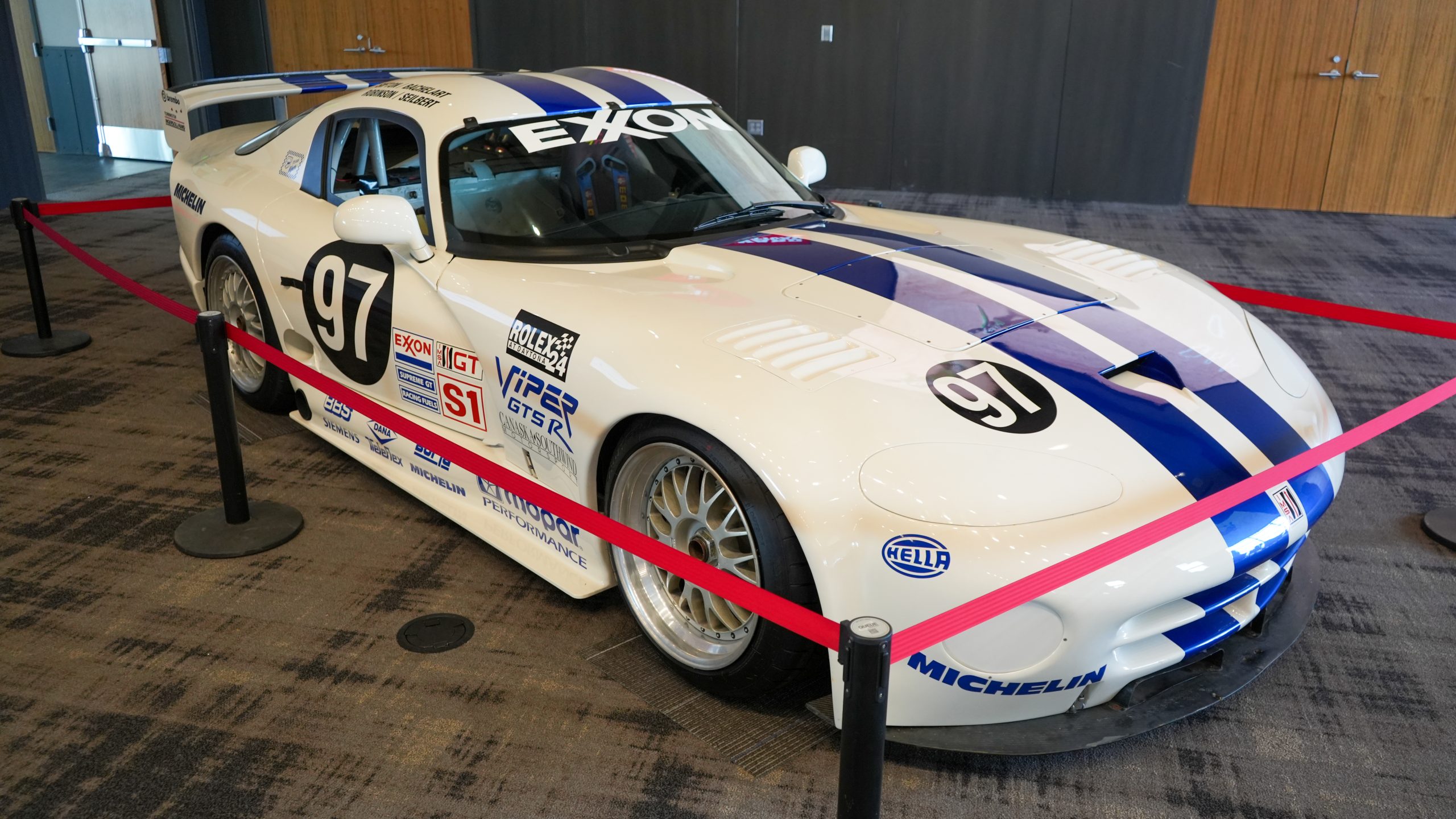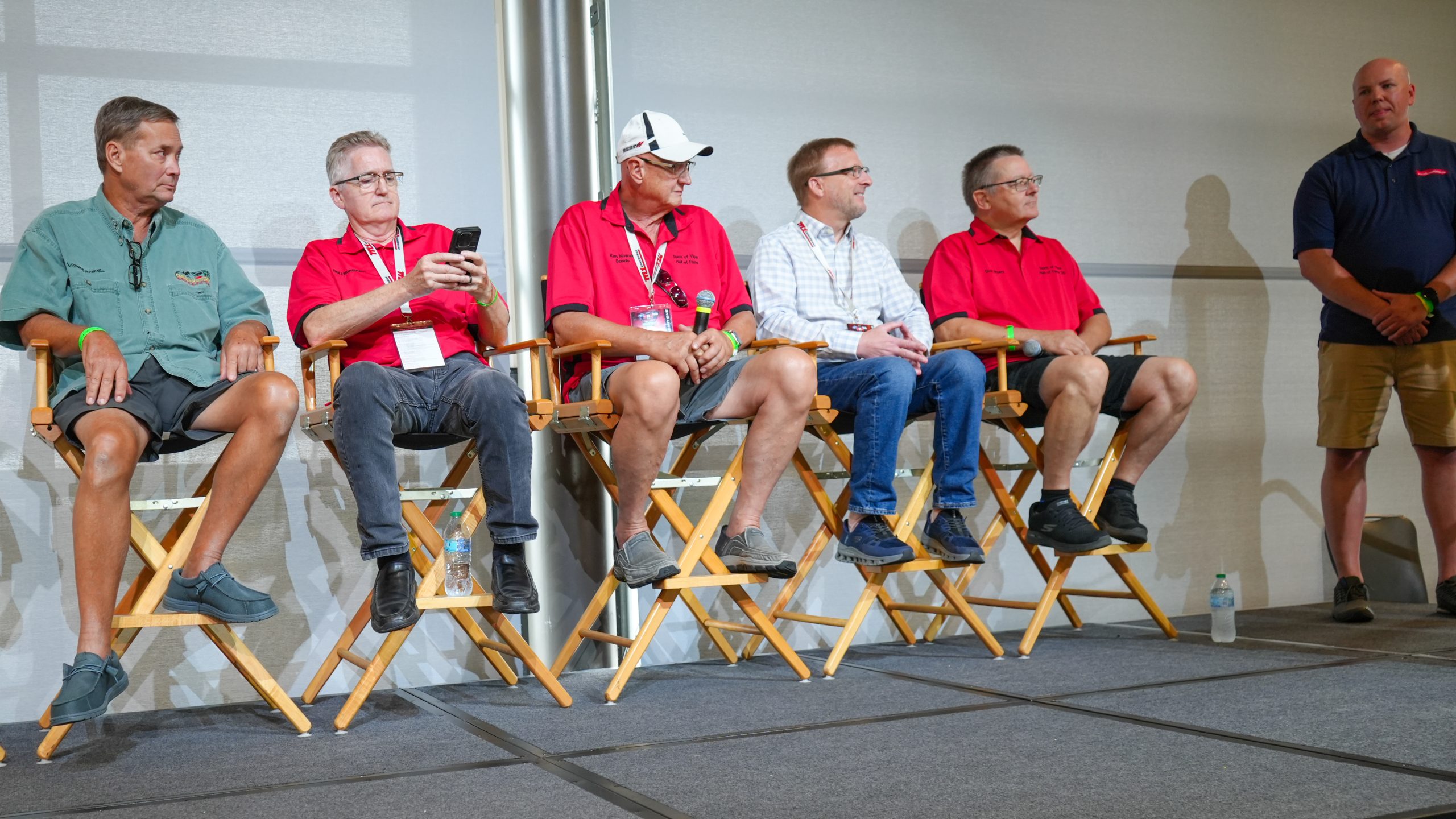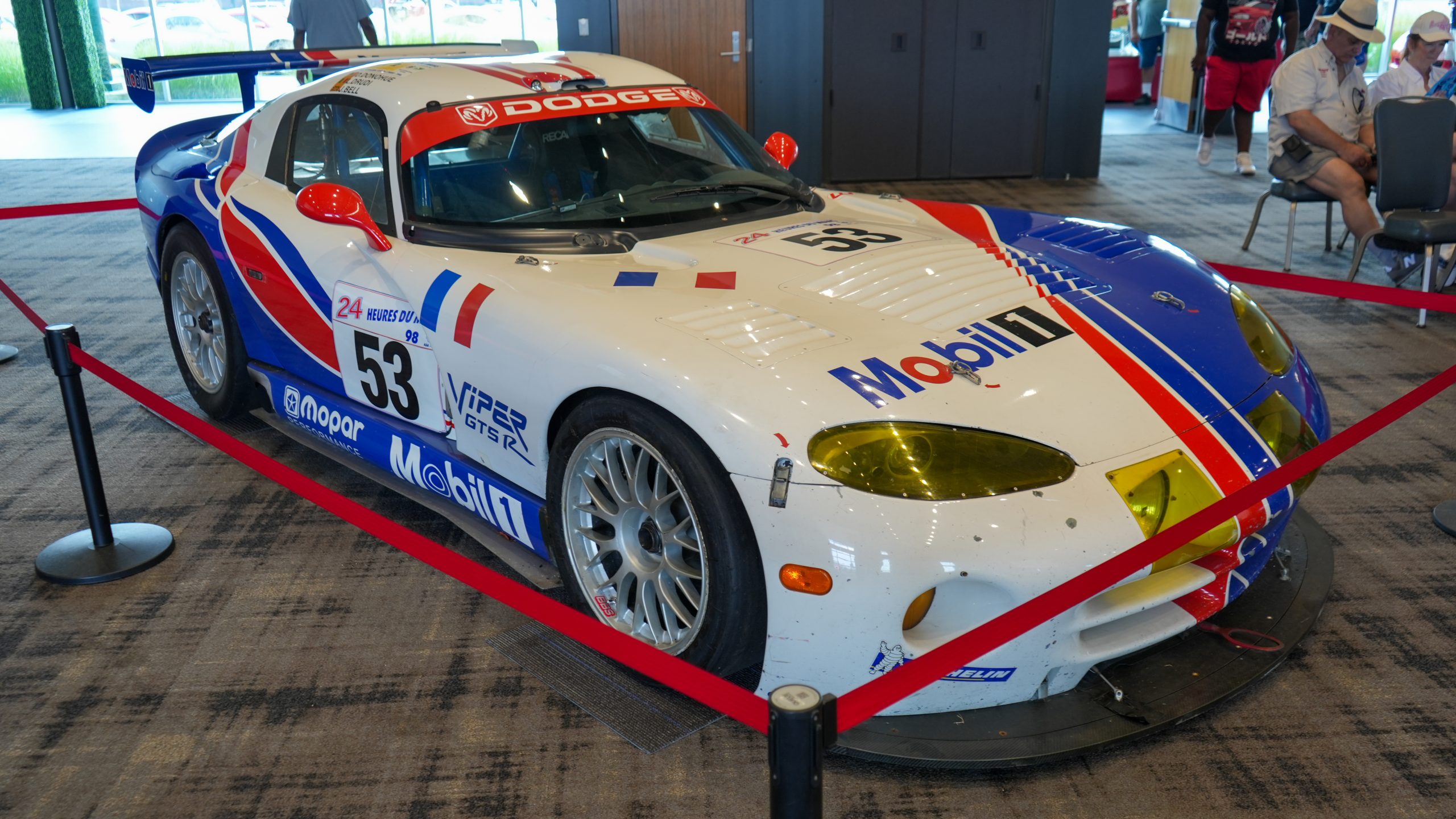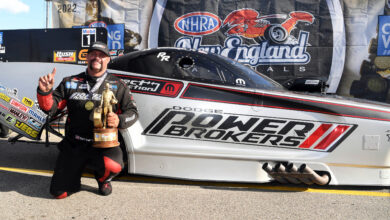Remembering the Birth of the Dodge Viper GTS-R
A Rare Conversation With the Team Who Made It Happen
This past Friday, I had the privilege of attending a remarkable panel discussion during the Viper Dream Festival at M1 Concourse in Pontiac, Michigan — just one day before the Woodward Dream Cruise. The event brought together key figures responsible for the creation of the Dodge Viper GTS-R, a car that transformed from a bold American street machine into one of the most dominant endurance racers of its era.
From Roadster to Race Car –

The panel began by revisiting the early days of the Viper program. The original Viper RT/10 was an uncompromising roadster designed to capture attention on the street, but it was never intended to compete at the highest levels of motorsport. With limited chassis rigidity and a lack of aerodynamic efficiency, the RT/10 struggled to be competitive on track.
The turning point came with the launch of the Viper GTS coupe in 1996. With its stiffer structure and aerodynamic advantages, it provided Dodge with a true foundation for a factory-backed race effort. Chrysler then partnered with French race Team Oreca and Reynard Motorsport in the UK to develop a purpose-built race car — the Viper GTS-R.
Debuting at Pebble Beach in 1995, the GTS-R quickly earned a reputation for its balance of raw American horsepower and sophisticated race engineering. Over the next several years, it would dominate FIA GT racing, claim victories at Daytona, Spa, and Le Mans, and cement its place in motorsport history.
The Panel of Experts –

The discussion featured an impressive lineup of individuals who each played a crucial role in the GTS-R’s development:
-
-
Neil Hannemann – Program Manager, 1995–1997
-
Gene Martindale – Suspension and braking specialist, and the first to test the GTS-R
-
Ken Nowak – Bodywork and Lighting
-
Dick Myers – Chassis, Program Manager, 1997–1999
-
Ray Schilling – Drafting, CFD, and Fabrication
-
A Car That Redefined Expectations –

One of the most compelling parts of the discussion was the way the panelists described the GTS-R’s evolution into a true world-beater. What began as a bold idea soon became a reality, as the GTS-R earned respect not only in North America but across Europe as well.
Driver Tommy Archer offered a unique perspective, sharing what it was like to push the car to its limits in competition. He explained how the GTS-R demanded precision but rewarded skill with unmatched performance. The pride in his voice — echoed by the entire panel — made it clear that the car’s achievements still resonate decades later.
-
Tommy Archer – Development driver and race-winning Team Oreca driver
The conversation was moderated by Shawn Romig of ViperRacingHistory.com, who has devoted years to preserving and documenting the complete history of Viper race cars.
Hearing these individuals recount their experiences felt like listening to a behind-the-scenes documentary that had never been filmed. They spoke openly about the technical hurdles and the risks Chrysler took to prove that the Viper could succeed on the international stage.
Why the GTS-R Matters –

The Dodge Viper GTS-R was more than a successful race car. It was a symbol of what American performance could achieve against the best in the world. Beating established marques like Ferrari and Porsche on their home turf was no small feat, and the GTS-R’s dominance proved that American engineering and determination could deliver at the highest levels of motorsport.
For me, the opportunity to hear this story directly from the people who lived it was unforgettable. Fortunately, I was able to capture the entire panel discussion, which I’ve uploaded to my The Mopar Junkie YouTube channel. While it runs about an hour, it is essential viewing for anyone who considers themselves a fan of the Viper or Mopar racing history.






1 reply
Loading new replies...
Join the full discussion at the Mopar Insiders Forum →